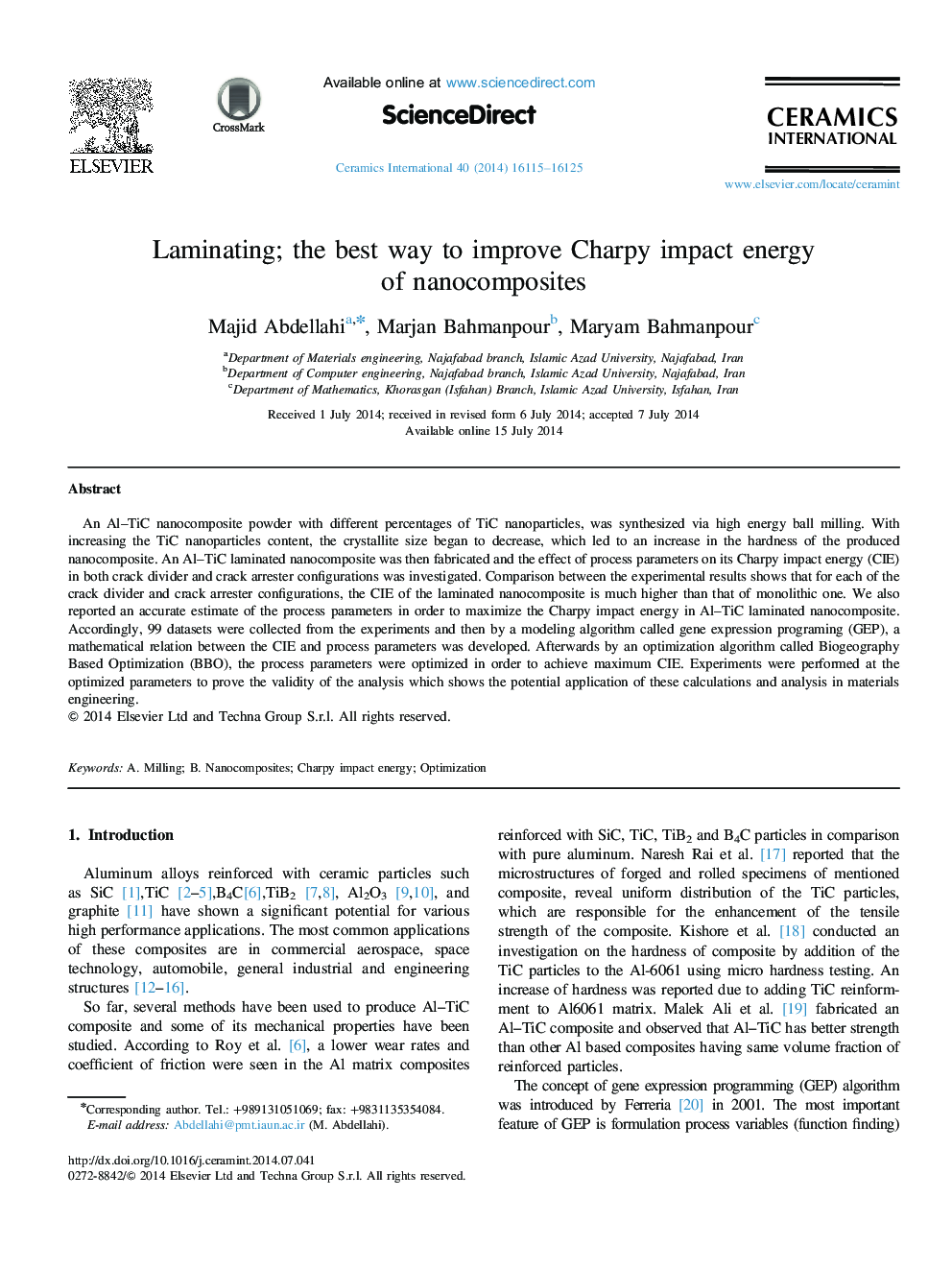| Article ID | Journal | Published Year | Pages | File Type |
|---|---|---|---|---|
| 1460483 | Ceramics International | 2014 | 11 Pages |
An Al–TiC nanocomposite powder with different percentages of TiC nanoparticles, was synthesized via high energy ball milling. With increasing the TiC nanoparticles content, the crystallite size began to decrease, which led to an increase in the hardness of the produced nanocomposite. An Al–TiC laminated nanocomposite was then fabricated and the effect of process parameters on its Charpy impact energy (CIE) in both crack divider and crack arrester configurations was investigated. Comparison between the experimental results shows that for each of the crack divider and crack arrester configurations, the CIE of the laminated nanocomposite is much higher than that of monolithic one. We also reported an accurate estimate of the process parameters in order to maximize the Charpy impact energy in Al–TiC laminated nanocomposite. Accordingly, 99 datasets were collected from the experiments and then by a modeling algorithm called gene expression programing (GEP), a mathematical relation between the CIE and process parameters was developed. Afterwards by an optimization algorithm called Biogeography Based Optimization (BBO), the process parameters were optimized in order to achieve maximum CIE. Experiments were performed at the optimized parameters to prove the validity of the analysis which shows the potential application of these calculations and analysis in materials engineering.
